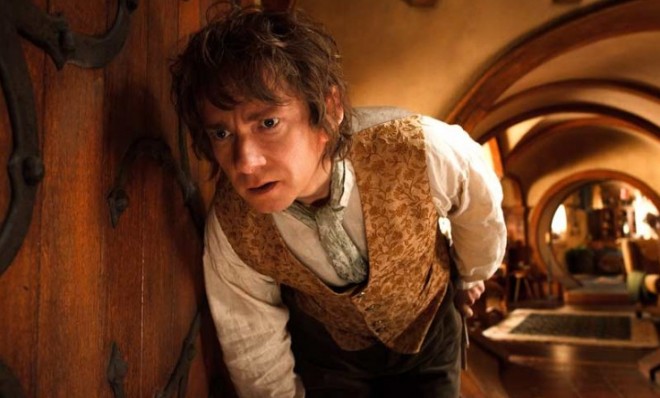Why is The Hobbit making some moviegoers sick?
The effects in Peter Jackson's new film are dizzying, according to some audience members. And not in a good way


The Hobbit: An Unexpected Journey, due to hit theaters on Dec. 14, is already having an unexpected effect. From accusations of "selling out" to allegations of animal abuse, director Peter Jackson's latest adaptation of a J. R. R. Tolkien novel has weathered its share of controversy, says Catherine Shoard at Britain's Guardian, but now, some audience members at advance screenings are reporting that the film's innovative, high-speed cinematography technique is literally nauseating them. Here's what you should know:
What technique did the movie's cinematographers use?
The film was shot in 3D at a camera speed of 48 frames-per-second (fps) instead of at the traditional rate of 24. Since this technique captures twice the usual amount of frames, it's said to create a more fluid and immersive picture that eliminates flicker and motion blur. "What you get is a real sense of reality," Ian McKellan, one of the film's stars, explained on Live! with Kelly and Michael. "And with the 3D, it doesn't come out at you, but rather takes you inside."
The Week
Escape your echo chamber. Get the facts behind the news, plus analysis from multiple perspectives.

Sign up for The Week's Free Newsletters
From our morning news briefing to a weekly Good News Newsletter, get the best of The Week delivered directly to your inbox.
From our morning news briefing to a weekly Good News Newsletter, get the best of The Week delivered directly to your inbox.
Why has this technique made audience members queasy?
When you watch a film, explains Adrian Bejan, a professor of mechanical engineering at Duke University, your eye combines "long and fast horizontal sweeps with short and slower vertical movements to process the picture." But this faster camera speed "requires the eye to sweep up and down faster than usual in close-ups to absorb unparalleled detail on a big screen," causing a significant amount of cognitive and eye strain. This technique "works for the big snowy mountains, but in close-ups the picture strobes," said one moviegoer. "I left loving the movie but feeling sick." Another audience member was more blunt: "My eyes cannot take everything in, it's dizzying," he said. "Now I have a migraine."
Will these reports hurt the film at the box office?
They could actually help. According the Guardian's Shoard, "there's a clear correlation between a film's gross-factor and its gross-factor" — and it's not necessarily bad. After all, early reviews of James Cameron's smash hit Avatar claimed that the film's groundbreaking visual effects were "literally vomit-inducing," while a vampire-birth scene in the penultimate installment of the blockbuster Twilight franchise reportedly caused seizures. Despite those undesirable reports, both those films went on to earn hundreds of millions of dollars. Still, most viewers of The Hobbit will be unaffected, says Laura Cox at Britain's Daily Mail: "Only about 1,000 of the cinemas showing the film worldwide" will offer The Hobbit in the 48fps format, so those worried about feeling sick can likely choose to watch the film in the traditional 24fps format.
A free daily email with the biggest news stories of the day – and the best features from TheWeek.com
Sources: Daily Mail, Guardian, USA Today, The Week UK
Samantha Rollins is TheWeek.com's news editor. She has previously worked for The New York Times and TIME and is a graduate of Northwestern University's Medill School of Journalism.


